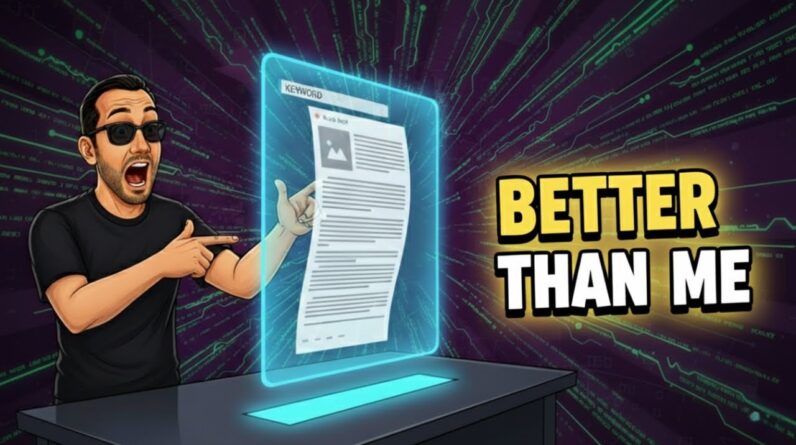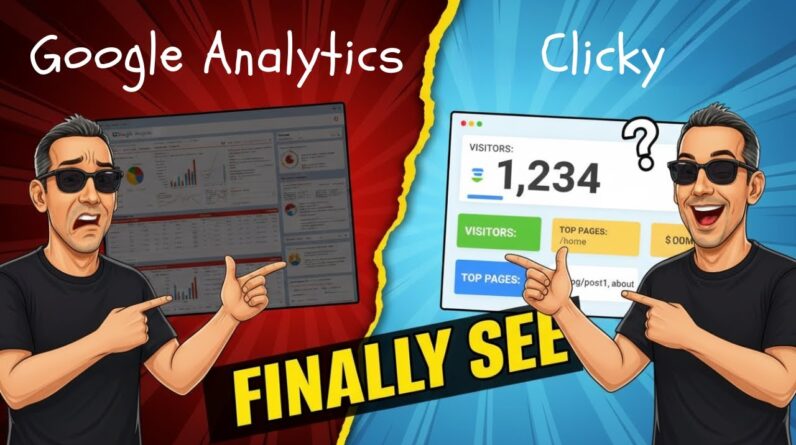![How to Create Faceless Videos for FREE with AI [NOT CHAT GPT]](https://chrisswright.com/wp-content/uploads/2023/04/how-to-create-faceless-videos-for-free-with-ai-not-chat-gpt-9BiDOiJZdLE-796x445.jpg)
Are you tired of feeling camera-shy but still want to create engaging video content? Look no further than creating faceless videos with the help of AI technology! Not only is it free, but it’s also incredibly easy to use. In this post, we’ll walk you through the steps to create your own faceless videos that will captivate your audience without needing to show your face. And no, we’re not talking about chat GPT – this method is even simpler. Keep reading to learn more!
How to Create Faceless Videos for FREE with AI: A Complete Guide
Are you interested in creating content for YouTube, but you’re camera-shy? Do you want to start producing faceless videos quickly and without spending money on expensive tools? If you answered “yes” to both questions, then you’re in the right place!
In this article, we’ll provide a step-by-step guide on how to create faceless videos, which can easily pass AI detection tools tests, using free resources such as VidIQ, Audacity, Canva, CapCut, and sources like Pixabay, Pexels, and Unsplash.
Introduction
In recent years, YouTube has become the go-to platform for people to share their interests, hobbies, and ideas. The growing competition means that creators need to continually innovate to attract and retain their viewers. One proven way to do this is by creating faceless videos.
Faceless videos are ideal for creators who don’t want to appear on camera or have difficulty articulating their ideas in real-time. These videos allow you to use stock images, animations, or whiteboards, along with your voiceovers. Before we jump into the step-by-step guide on how to create these videos for free, let’s look at some successful channels that are producing faceless videos.
Examples of successful channels that produce faceless videos
-
Hubspot – Hubspot is a marketing firm that helps businesses grow their customer base. They produce videos on various topics like lead generation, inbound marketing, and social media. Their faceless videos use stock images, diagrams, and animations with a voiceover.
-
Vox – Vox is a multimedia news outlet that produces explainer videos on various topics like politics, science, and business. They use whiteboards, animations, and stock footage to explain complex concepts clearly.
-
Tom Scott – Tom Scott is a YouTuber who produces videos on science, technology, and the internet. His faceless videos use animations and diagrams with a voiceover.
Resource tools mentioned: VidIQ, Audacity, Canva, CapCut, Pixabay, Pexels, and Unsplash
Here are the essential tools and sources we’ll be using to create our faceless video:
-
VidIQ – VidIQ is a free tool that provides analytics on YouTube videos. The tool analyses videos and provides insights on what the creators can do to improve their content. VidIQ has an AI coach that generates scripts for a video.
-
Audacity – Audacity is free software used for recording and editing audio. We’ll use Audacity to record our voiceovers.
-
Canva – Canva is an online graphic design tool. It provides templates for designing graphics and images for videos.
-
CapCut – CapCut is a video editing app that lets users create videos with ease. We’ll use CapCut to edit our clips and add audio.
-
Pixabay, Pexels, and Unsplash – These are free stock image and video sources. We’ll use them to find images and videos for our video.
How to create faceless videos for free using AI
Before we start creating our video, here’s a free set of keywords that you can practice with:
- Digital marketing
- Social media marketing
- Content marketing
- SEO
- Email marketing
- Lead generation
- Branding
We’ll follow these eight steps to produce our faceless video:
Step 1: Find the topic
The first step is to identify the topic for our video. We’ll use VidIQ’s AI coach to generate the script for the video. Enter the keyword in the VidIQ search bar, select the videos with the most views, click on the “Related tags” button to get more keyword suggestions, and finally add any relevant tags.
Step 2: Script the video
Once we have the topic, we’ll use VidIQ to generate the script. The tool analyses the top videos for that keyword and creates a script based on that. We’ll use this script as a starting point and modify it to reflect our ideas.
Step 3: Record the voiceover
We’ll use Audacity to record the voiceover using our microphone. Make sure your recording environment is quiet and free from distractions. Record the voiceover in short sections and save each one with a descriptive name.
Step 4: Create the visuals
Next, we’ll use Canva to create the graphics for the video. We’ll use the script as a guide and create graphics that complement it. Use images, text, and charts to convey our message.
Step 5: Find relevant stock footage
We’ll use Pixabay, Pexels, and Unsplash to find the relevant images and videos for our video. Make sure the images and footage are free to use and modify for commercial purposes.
Step 6: Edit the video with CapCut
Now, we’ll use CapCut to edit our video clips and add our voiceover. We’ll follow the script and add visuals at relevant times to make the video engaging.
Step 7: Add music
We’ll add background music to our video to make it more engaging. CapCut has a library of royalty-free music that we can use.
Step 8: Upload the video
Finally, we’ll upload the video to YouTube. Make sure you include relevant tags, titles, and descriptions that include the target keywords.
Conclusion
Creating faceless videos can be an excellent way to produce content for YouTube without being on camera. By following the steps outlined above and using free tools and resources, we can produce high-quality videos that engage our viewers.
FAQs After The Conclusion
- How long should a faceless video be?
- Can I use my own images instead of stock images?
- Can I use a text-to-speech tool instead of recording my voiceover?
- Can I add animations to my faceless video?
- How can I promote my faceless video on YouTube?






